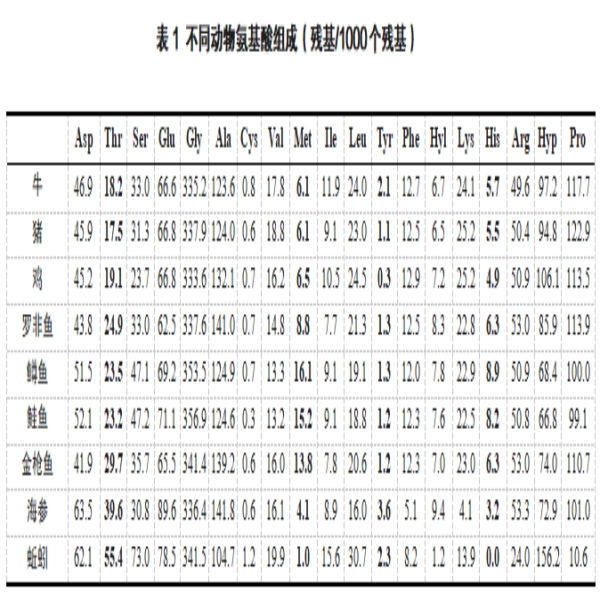In recent years, collagen peptide products have been continuously hot in the fields of health food, beauty, medicine and so on, and the collagen peptide industry has developed rapidly. However, the newly prosperous market is often the most prone to unscrupulous manufacturers because of profit, especially in the current peptide product market, fish-derived collagen peptides because of its effect, taste and safety advantages, widely favored by consumers.
However, some manufacturers pass off peptides from animals such as cattle and pigs as fish peptides, reducing production costs, and exaggerating propaganda with fake, shoddy, and false. These behaviors not only disturb the market order, damage the rights and interests of consumers, but also seriously destroy the trust of consumers, and bring a series of hazards and risks to the overall development of the collagen peptide industry. At the same time, because of the high-tech attributes attached to the collagen peptide itself, consumers are often distressed in the process of identifying collagen peptide products, and they do not know where to start.
Therefore, Hainan Huayan Collagen, as one of the top 10 collagen peptide manufacturer, will share the tips on how to identify collagen peptide source? fish collagen peptide or bovine/pig peptide?
Sensory Method
Use 80-100℃ hot water and pour directly into the collagen peptide powder to be identified. After shaking, gently stir the hand on the cup to let the odor in the cup quickly spread to the nostrils, smell its flavor, to be completely dissolved after gently shaking to observe the liquid fluidity and hanging wall, and finally rinse the mouth with water and taste the solution.
|
Type |
Smell |
|
Fish Collagen Peptide |
Slightly fishy smell |
|
Bovine/Pig Collagen Peptide |
A distinctly bovine or pig skin odor |
Amino acid analysis
Amino acid composition analysis is a method of determining the source and nature of amino acids in a peptide chain by analyzing the type and proportion of amino acids in the chain. It is usually performed using an amino acid analyzer, which separates and detects the content of each amino acid after hydrolysis. The advantage of this method is that the analysis results are reliable and provide information on the amino acid composition of the peptide, which helps to assess the nutritional value and functional properties of the peptide. It is particularly suitable for confirming the origin and basic properties of peptides. The disadvantage of this method is that it is difficult to differentiate the source of peptides when the sources are similar. In terms of operability, the method of amino acid composition analysis is more mature, and the required equipment is widely used. Amino acid composition analysis is a well-established and widely used analytical method in many fields, capable of quantitatively determining the content of various amino acids in samples.Y Taga’s study (Table 1) found that the content of threonine, histidine, methionine, and tyrosine in collagen peptides of fish origin differed from that in collagen peptides of bovine and porcine origin.
Threonine (23.2-29.7‰), histidine (6.3-8.9‰), methionine (8.8-16.1‰) and tyrosine (1.2-1.3‰) content of fish-derived collagen peptides; Hydroxyproline content of fish-derived collagen peptides is generally <10%. If it is not in the above range, it is basically certain that it is not a collagen peptide of fish origin.
Welcome to contact us for more details.
hainanhuayan@china-collagen.com sales@china-collagen.com
Post time: Nov-12-2024





